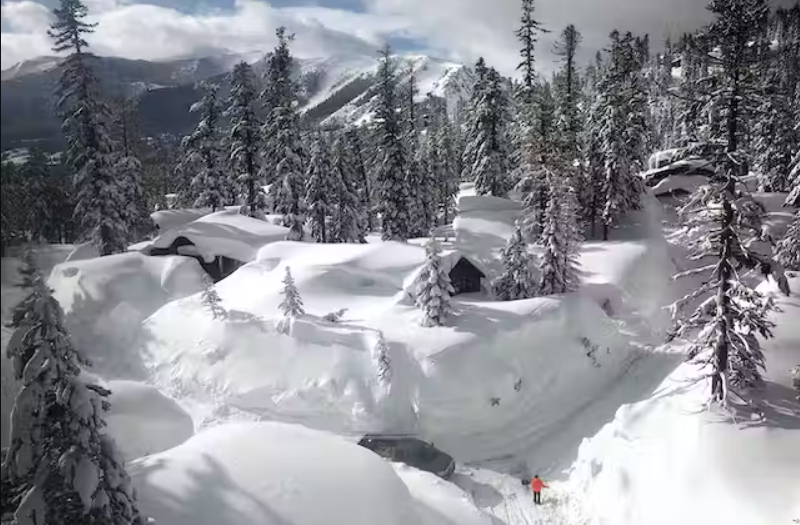Snowfall across the globe is decreasing due to rising temperatures linked to human-induced climate change, as revealed by recent analyses and maps from a NOAA climate scientist.
The consequences extend beyond reduced shoveling, posing threats to exacerbate warming trends and disrupt vital food and water sources for billions.
Climate experts predict a future where a warmer world, fueled by human pollution, will lead to more rain than snow.
While short-term effects may include occasional extreme winter storms, the long-term trend indicates a decline in snowfall amounts, emphasizing the inevitability of transitioning from snow to rain as temperatures rise.
According to Brian Brettschneider, a climate scientist with the National Weather Service, the laws of thermodynamics dictate this shift.
Though there might be temporary deviations, the overall trend points toward a reduction in snowfall, especially in the Northern Hemisphere’s mid-latitudes, where a significant portion of the global population resides.
Current data, analyzed by the European Union’s Copernicus Climate Change Service, shows a 2.7% decline in annual global snowfall since 1973.
This decline is particularly noticeable in the mid-latitudes, where the absence of snow cover can lead to increased absorption of sunlight, contributing to atmospheric warming.
The repercussions of diminishing snowfall extend beyond aesthetics. Snowpack, acting as a natural reservoir, is crucial for water supply.


Declining snowpack, especially in regions with erratic precipitation cycles like the American West, threatens water availability for agriculture, ecosystems, and cities. California, with its Mediterranean climate, relies heavily on snowmelt runoff during the dry season.
Maps depicting snowfall changes over the last 50 years highlight a pronounced decline in parts of the western U.S., consistent with studies reporting over 90% decline in snowpack at measured sites.
Even with an overall positive trend in total snowfall in the Northeast, the analysis reveals a negative trend in days per year with snowfall, indicating a potential increase in extreme snowfall events.
However, understanding the impact of reduced snowfall on global water supply is complex.
Justin Mankin, a climate scientist, emphasizes the importance of tracking water content in snow rather than its volume.
The issue extends beyond mere quantity, as the density of snow also plays a role.
Extreme precipitation events causing increased snowfall may also result in more rain, potentially compensating for snow losses.
Despite the complexity, the problem is extensive. Mankin’s 2015 study identified two billion people, particularly in South Asia, the Mediterranean, and North Africa, at risk due to declining snow.
While there is ongoing research to better understand the nuanced relationship between snow and water supplies, the challenge remains substantial.
Managing water resources in the face of dwindling snowfall requires a multifaceted approach, urging water managers to adapt to a changing climate rather than adhering to historical norms.
WHO Confirms First-Ever Sexual Transmission Of Mpox In Congo

